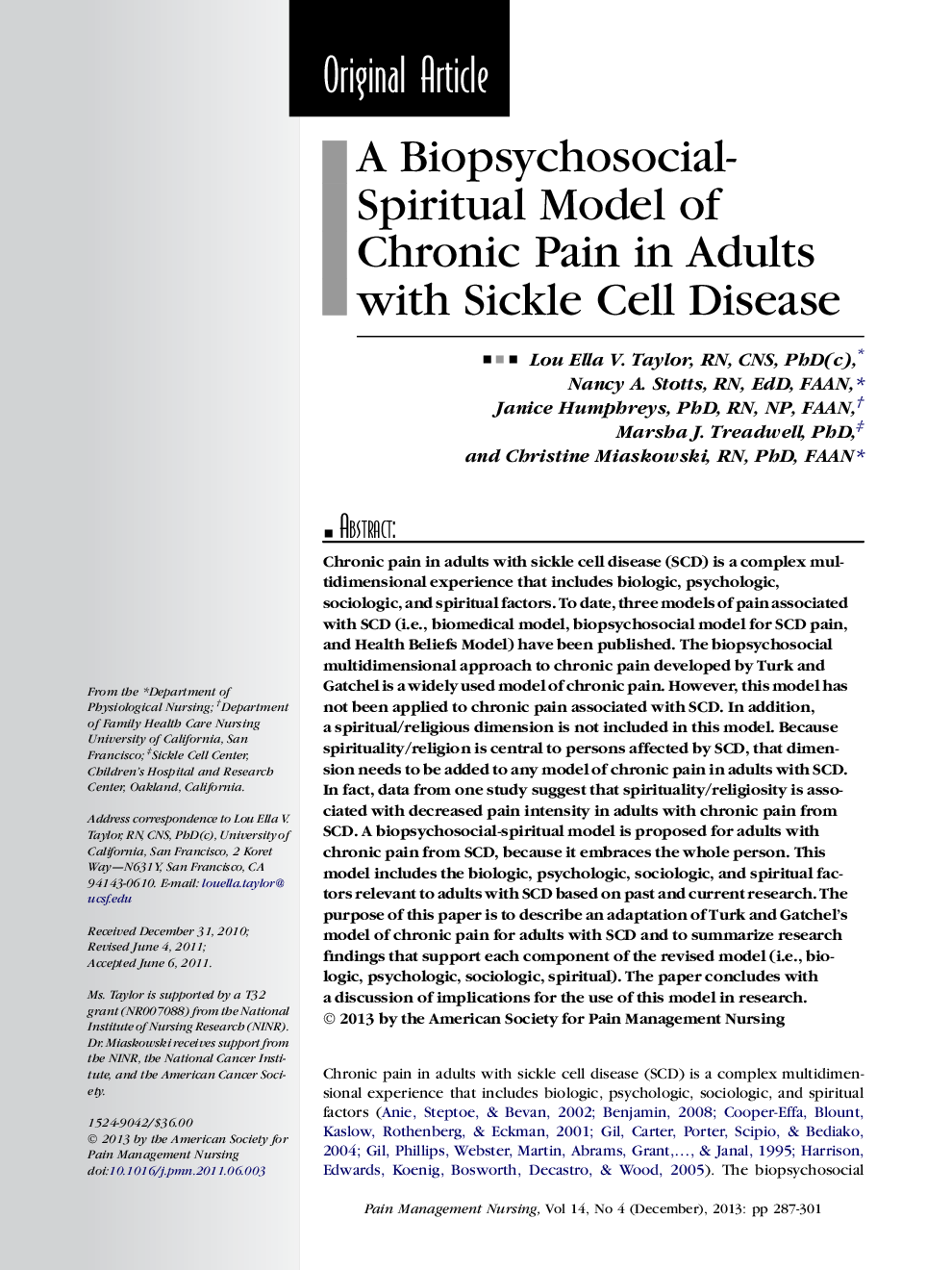| Article ID | Journal | Published Year | Pages | File Type |
|---|---|---|---|---|
| 2674658 | Pain Management Nursing | 2013 | 15 Pages |
Chronic pain in adults with sickle cell disease (SCD) is a complex multidimensional experience that includes biologic, psychologic, sociologic, and spiritual factors. To date, three models of pain associated with SCD (i.e., biomedical model, biopsychosocial model for SCD pain, and Health Beliefs Model) have been published. The biopsychosocial multidimensional approach to chronic pain developed by Turk and Gatchel is a widely used model of chronic pain. However, this model has not been applied to chronic pain associated with SCD. In addition, a spiritual/religious dimension is not included in this model. Because spirituality/religion is central to persons affected by SCD, that dimension needs to be added to any model of chronic pain in adults with SCD. In fact, data from one study suggest that spirituality/religiosity is associated with decreased pain intensity in adults with chronic pain from SCD. A biopsychosocial-spiritual model is proposed for adults with chronic pain from SCD, because it embraces the whole person. This model includes the biologic, psychologic, sociologic, and spiritual factors relevant to adults with SCD based on past and current research. The purpose of this paper is to describe an adaptation of Turk and Gatchel’s model of chronic pain for adults with SCD and to summarize research findings that support each component of the revised model (i.e., biologic, psychologic, sociologic, spiritual). The paper concludes with a discussion of implications for the use of this model in research.
